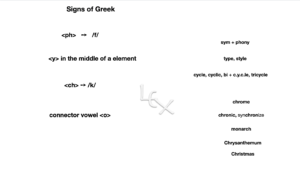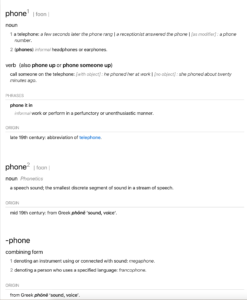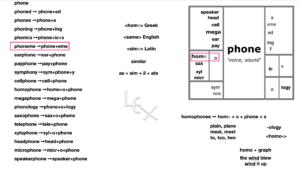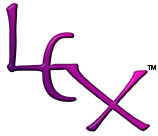Money Clip
Today I was studying with Summer, who is almost 10 and just finished up 4th grade. We have been studying together for about a year and a half. When we started, she was already quite a proficient reader, thanks to her parents’ efforts, but spelling remained elusive. We started just with studies of words that caught her attention: robot, light, wood, squirrel, purple, Halloween, pool. We quickly established foundational principles of English spelling, and embarked on studies of the Homophone Principle, tense and lax vowels, a study of the alphabet and its history (which is more important to spelling than you might realize), and a boatload of conventions. No complete English word ends in <i, j, u, v>. When you can’t use a <u>, use an <o>. Jobs of a replaceable <e>. Default graphemes. Narrative and expository text structures, for writing. We’ve studied Grimm’s Law, Latin palatals, and even some Indigenous American languages she got interested in elsewhere in her homeschooling.
For the last 3 or 4 months, so basically during the lockdown, we’ve been focusing on Latin and Greek more. Traditionally, in school, study of Latin and Greek elements is not focused at all on spelling, but on vocabulary, as though those are different things in English (they’re not). This includes Latin palatals, as I mentioned, but also assimilated prefixes, twin base elements, and connecting vowel letters. Summer knows that in words of Greek origin, the vowel is always an <o>, always between base elements, and virtually always syllabic. There’s the suffixal construction <-oid>, which has a lexical history and is built from <o+id>, in which the <o> glides and is not syllabic, but you can still hear it. In Latinate words, the connecting vowel letters are <u, i, e>, and you cannot always hear them syllabically in the pronunciation of a word. For example, in <circ + u + it>, you can’t hear the <u>. In <part + i + al>, the <i> is non-syllabic, although it does mark the phonology of the <t>.
Today, we were reviewing the signs of Greek spellings that we’d studied before: <ph>, <ch> spelling /k/, and that connecting vowel <o>.
 We had already studied families for <graph> and <phone>, both of which provide lots of opportunities for noticing that connecting <o>. Today, we were talking about the word came back to that <phone> matrix for a minute, because in it was a golden opportunity.
We had already studied families for <graph> and <phone>, both of which provide lots of opportunities for noticing that connecting <o>. Today, we were talking about the word came back to that <phone> matrix for a minute, because in it was a golden opportunity.
We noticed again that the denotation for the family is ‘voice, (vocal) sound.’ Every word in that family will have something to do with voices or sound — usually but not always vocal sound. We noticed that words like headphone, earphone, and speakerphone are hybrid words, comprised of the Greek <phone> along with a native English element. When I asked, she wasn’t sure how to hypothesize about whether a word was native to English or not.
“Ask yourself,” I began, “whether people needed that word 1,000 years ago. So, for example, did people have headphones 1,000 years ago?” She giggled. No. “Did they have earphones, or saxophones, or telephones?” No again. “Did they have heads?” She and her dad cracked up. Yes. “How about ears?” Also yes. “Did they speak?” Yes. OK! so those words are likelier to be native words, which they all are.
We talked through the words homophone and homograph, and then I said that I wanted to share a rather sophisticated but very important understanding with her. I typed on the screen:

I explained. “Each word in that family has a general, central meaning, a denotation, of ‘voice, sound.’ But they do not all have a central meaning of ‘telephone.'” She nodded. I continued. “The base element — you know what I mean by a base,” I verified. “The base element that is spelled <phone> is what every member of that family shares. But the word that is spelled <phone> and its specific meaning are not shared by every member of that family.” She stared at me. I tried again.
“The word spelled <phone> is a clip of telephone. Do you know what I mean by clip?” I asked.
“Like a different meaning?” she guessed.
“Not exactly. Let me give you some examples,” I offered. “Flu is a clip of influenza, but you might not know that,” I realized aloud. “Here — you tell me. What is lab a clip of? What longer word?” Without missing a beat, she nailed it: laboratory. “Yes!” I cheered. “So what do you think a clip is?”
“It’s like where you clip off a part of a word,” she said. I confirmed.
“And then it basically replaces the whole word,” I explained. “So the word <phone> is a clip of telephone, and it means ‘telephone.’ But the base element <phone> is different, and it denotes ‘voice, sound.'”
We looked at a couple other examples of free base elements that have distinct meanings as words. The base element <sign> denotes ‘mark.’ Every word in its family has a central, general denotation of ‘mark’: signed, signature, signal, signet, design, resign, designate…  But the word <sign> has a more specific set of connotations that are not necessarily shared across the family.
But the word <sign> has a more specific set of connotations that are not necessarily shared across the family.
We came back to <phone>. Then I realized something fantastic. I took her to the dictionary.
We noticed the Greek origin and denotation at the bottom of the entry. We noticed that the dictionary lists <-phone> as a *combining form [sic], and noticed what it can mean. Then I asked her, “How many words phone do you see?” She noticed two. She already knew one — telephone, cellphone, that kind of thing. The second one, I explained and exemplified with vowels and consonants.
“The thing is,” I explained, “when you’re spelling, you can’t just rely on pronouncing phones to spell a word, can you?” She shook her head. “Like what if you want to spell [wʌn]?” I asked. “Why can’t you just spell each phone?” We talked about the homophones one and won, and the fact that you have to organize the pronunciation inside of the meaning in your head before you know how to spell it. “Once it’s in your head, and not in your mouth,” I explained, “that’s no longer a phone. That’s a phoneme.”
She stared at me again. We went back to our <phone> matrix. I boxed the word sum for phoneme.
She nodded. She had not realized that she had seen the word before; I rarely use it with her. “That’s what we actually spell,” I said. “It’s that vocal sound, but it’s organized in meaningful system, not just a random, isolated sound.”
She nodded again. Her dad said, “Wow.”
 “I told you guys it was sophisticated,” I said. “I also knew you could handle it.
“I told you guys it was sophisticated,” I said. “I also knew you could handle it.
“The thing is, when you’re spelling, you can’t just start with sounds,” I said, pulling up the Signs of Greek slide from the beginning of our session. “You have to think about what a word means, and how it’s built, and where it comes from, in order to understand how to spell it.”
The same thing works with <phote + o>, or <photo>, which is a clip of photograph, but also a complex form that is used to mean ‘light,’ as in photosynthesis, photosensitive, photoreceptor. Also bio, which can be a clip of biography (biopic), a clip of biology (biodegradable, biohazard), or a complex form used to mean ‘life,’ as in biogenic, biosphere, or, you know, biology and biography.
It is certain that we will revisit this, spiral back around more than once. Because it IS a sophisticated understanding. But also a necessary one. Just as homophones are central to understanding how spelling works, clips are central to understanding how meaning works.
Summer’s understanding is right on the money.
